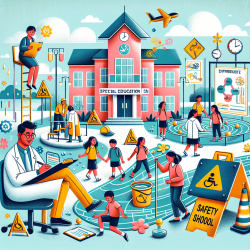Unlocking Potential: How Speech Therapy Telepractice is Transforming Schools
In today's fast-paced educational landscape, school social workers are continually seeking innovative solutions to meet the diverse needs of their students. With the rise of technology, the integration of online therapy services, such as speech therapy telepractice, has become a game-changer in creating effective and accessible tools for student support. But how exactly does this revolutionize the approach to therapy in schools?
The Power of Speech Therapy Telepractice
Speech therapy telepractice offers a flexible and data-driven approach to address the communication needs of students. Unlike traditional in-person sessions, telepractice provides a dynamic platform where students can engage in therapy from the comfort of their familiar school environment. This method not only increases accessibility but also ensures that students receive consistent and high-quality care.
Why School Social Workers Should Embrace This Tool
For school social workers, incorporating speech therapy telepractice into their toolkit can lead to several benefits:
- Enhanced Accessibility: Students in remote or underserved areas can access therapy services without the need for travel, ensuring equitable opportunities for all.
- Consistency and Flexibility: Telepractice allows for more consistent scheduling and flexibility, accommodating the busy timetables of both students and therapists.
- Data-Driven Insights: The digital nature of telepractice enables the collection of detailed data on student progress, allowing for more informed decisions and personalized intervention plans.
Creating a Supportive Environment
Implementing speech therapy telepractice in schools is not just about providing a service; it's about creating a supportive environment where students can thrive. By utilizing this tool, school social workers can foster an inclusive atmosphere that promotes self-actualization and empowers students to reach their full potential.
Furthermore, telepractice platforms often include resources and training for school staff, equipping them with the necessary skills to support students effectively. This collaborative approach ensures that everyone involved in the student's educational journey is aligned and working towards common goals.
Data-Driven Decision Making
In the realm of speech therapy in schools, data-driven decision-making is paramount. Telepractice platforms provide comprehensive analytics that track student progress, engagement, and outcomes. This data can be instrumental in tailoring interventions to meet individual needs and measuring the effectiveness of therapy sessions.
By leveraging these insights, school social workers can make informed decisions that enhance the quality of care provided to students, ultimately leading to better outcomes.
Conclusion
As school social workers, embracing speech therapy telepractice is a strategic move towards creating an informed, accessible, and supportive educational environment. By integrating this tool, schools can ensure that all students have the opportunity to develop essential communication skills, paving the way for academic and personal success.
In a world where data-driven decisions are key to effective education, speech therapy telepractice stands out as a valuable resource for school social workers dedicated to making a meaningful impact.










